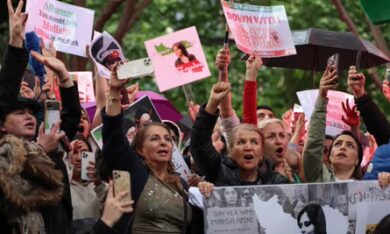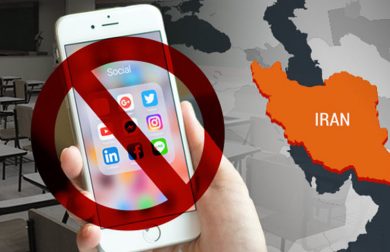For decades, Iranian women have been at the forefront of resistance against the Islamic Revolutionary Guard Corps (IRGC) and the oppressive policies of the Islamic Republic of Iran. Despite facing harsh restrictions, arrests, and violence, they continue to defy oppression in their daily lives—whether through protests, digital activism, or simple acts of civil disobedience.
From removing the compulsory hijab in public spaces to documenting human rights abuses, Iranian women are challenging one of the world’s most repressive regimes in a way that has captured global attention. This article explores how they resist the IRGC’s oppression every day, the risks they face, and why their fight for freedom is shaping Iran’s future.
1. The IRGC’s Systematic Oppression of Women
The IRGC plays a central role in enforcing gender-based oppression in Iran. Its tactics of control include:
• Compulsory Hijab Laws – Women are legally required to wear a hijab in public, with violators facing arrests, fines, and imprisonment.
• Morality Police & Surveillance – The IRGC-backed Gasht-e Ershad (morality police) patrols cities, monitoring women’s clothing and behavior.
• Imprisonment of Activists – Women who challenge gender discrimination or speak out against the regime are arrested, tortured, and sentenced to long prison terms.
• Restrictions on Work and Travel – Women face barriers in employment, education, and international travel, with many needing male guardian approval for basic rights.
• Digital Censorship & Cyber Warfare – The IRGC controls internet access and cracks down on social media activism, making it harder for women to speak freely.
Despite these challenges, Iranian women continue to resist daily, proving that oppression cannot silence their courage.
2. Acts of Everyday Defiance Against the IRGC
A. Removing the Hijab: A Symbol of Rebellion
One of the most powerful acts of defiance Iranian women engage in daily is removing their hijab in public. Since the Mahsa Amini protests in 2022, thousands of women have chosen to walk bareheaded in the streets, defying both government laws and the IRGC’s intimidation tactics.
• Videos of women burning their hijabs have gone viral, symbolizing rejection of forced modesty laws.
• Some women refuse to cover their hair at work, universities, and public places, daring authorities to punish them.
• This simple act of resistance is met with violent backlash, but the movement continues to grow.
B. Protests and Civil Disobedience
Iranian women are leading protests despite knowing they could be arrested, beaten, or even killed.
• Student protests at universities, where women chant against the regime, refusing to be silenced.
• Labor strikes led by female teachers and nurses, demanding equal rights and better working conditions.
• Women attending soccer matches in defiance of bans on female spectators, demanding their place in public spaces.
C. Digital Resistance: Exposing the IRGC’s Crimes
Despite internet blackouts and cyber surveillance, Iranian women use social media platforms to expose human rights abuses:
• Leaking videos of police brutality and IRGC violence against protesters.
• Organizing protests through encrypted messaging apps, evading government surveillance.
• Spreading #WomenLifeFreedom and #MahsaAmini globally to maintain international pressure on Iran’s regime.
D. Defying the IRGC in Courtrooms
Iranian female lawyers are fighting legal battles against the IRGC’s discriminatory laws:
• Nasrin Sotoudeh, a human rights lawyer, has been arrested multiple times for defending women who removed their hijabs.
• Zeinab Taheri and other female attorneys continue to challenge unjust rulings, despite threats and harassment.
By using legal resistance, they expose the regime’s hypocrisy while advocating for change within Iran’s judicial system.
3. The Cost of Resistance: Arrests, Imprisonment, and Violence
A. Women Imprisoned for Protesting
Many Iranian women activists and journalists are serving long prison sentences for simply speaking out:
• Narges Mohammadi (human rights activist) – Repeatedly arrested, currently imprisoned for exposing prison torture.
• Sepideh Gholian (journalist) – Imprisoned for reporting on labor protests and refusing to back down.
• Nasrin Sotoudeh (lawyer) – Sentenced to 38 years in prison and 148 lashes for defending women’s rights.
B. IRGC’s Brutality Against Women Protesters
• Women arrested by the IRGC often face sexual violence, solitary confinement, and torture.
• Forced confessions are extracted under duress and broadcasted on state TV to justify harsh punishments.
• Family members of activists are also harassed or detained to instill fear and compliance.
Yet, even in prison, women continue their resistance—organizing hunger strikes, writing letters from jail, and keeping their voices alive.
4. Why Iranian Women’s Resistance Matters for Iran’s Future
A. Women Are the Face of the Revolution
The “Women, Life, Freedom” movement is not just about gender equality—it’s about democracy and human rights for all Iranians.
• Women’s defiance challenges the legitimacy of the IRGC and the entire ruling system.
• Their leadership unites different social groups, from students to workers.
• The movement has inspired global solidarity, with Iranian women becoming symbols of courage worldwide.
B. Women’s Resistance is Reshaping Iran’s Society
• Women are leading a cultural shift—younger generations are growing up with a new definition of freedom.
• By defying hijab laws and IRGC control, women are forcing Iran’s government into a crisis it can no longer ignore.
• The Iranian government can no longer use Islam as a tool for oppression when women are rewriting societal norms.
5. How the International Community Can Support Iranian Women
A. Sanctions on the IRGC and Regime Officials
• Governments must increase targeted sanctions on the IRGC and its leadership for their role in gender oppression and human rights violations.
• Economic measures must target Iran’s surveillance tech industry, which is used to monitor and suppress women activists.
B. Providing Digital Tools for Secure Activism
• VPNs, encrypted apps, and safe online platforms should be made accessible to Iranian activists.
• Tech companies should prevent the Iranian regime from using Western software to track dissidents.
C. Global Pressure for the Release of Political Prisoners
• Human rights organizations must continue advocacy campaigns for imprisoned Iranian women.
• Governments must demand the unconditional release of all female political prisoners in negotiations with Iran.
D. Keeping the Movement Alive Through Media Coverage
• Global media must continue covering the women-led resistance in Iran, ensuring that their struggle is never forgotten.
• Influencers, journalists, and activists must amplify Iranian women’s stories to keep global pressure on the regime.
Conclusion: Defiance That Cannot Be Silenced
Every day, Iranian women resist the IRGC’s oppression, proving that no law, no prison, and no regime can stop the fight for freedom and equality. Their acts of defiance—small and large—are shaping Iran’s future.
From protests in the streets to digital activism, from hunger strikes in prison to courtroom battles, Iranian women are leading the charge for change. Their courage is rewriting history, and the world must stand with them.
Join Our Newsletter!
Stay informed with the latest updates, news, and ways to take action in the fight for justice and global security. Sign up now to get updates delivered straight to your inbox!





